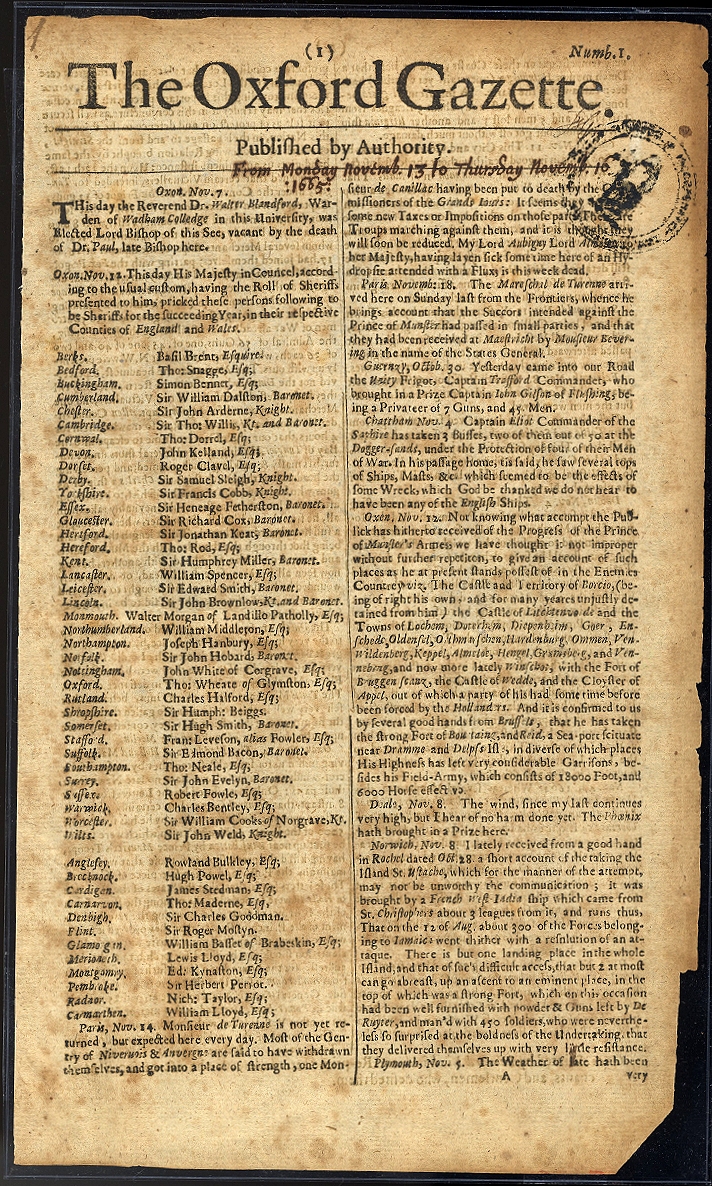First printed as the Oxford Gazette, and later moving to became the London Gazette, the English-language broadsheet was being read years before the term “newspaper” was coined – and it is still in publication today as Britain’s official organ of record.
On November 7, 1665, the first issue of the Oxford Gazette came off the press, authorized by King Charles II to tell the privileged classes what he wanted them to know. He had t printed 60 miles west of London in an effort to escape the Great Plague that was killing so many residents of that city, and inaugural issue contained the government’s “Bill of Mortality” listing the epidemic’s latest victims. Oxford University’s Leonard Litchfeld was authorized to serve as its printer.
A well-known politician, Joseph Williamson wrote the first edition, stating that its publication was, “For the Use of some Merchants and Gentlemen who desire them.” The first article announced the appointment of a new Bishop of Oxford, reporting: “This day the Reverend Doctor Walter Blandford, Warden of Wadham Colledge in this University, was Elected Lord Bishop of this See; vacant by the death of Br. Paul, late Bishop here.”
Samuel Pepys in London got hold of a copy on November 22, and wrote in his diary: “This day the first Oxford Gazettes came out, which is very pretty, full of news, and no folly in it.”
After three months in Oxford, Charles II judged London safe enough to return with his court and the useful broadsheet was moved with him as the London Gazette.
Consisting of a single page broadsheet, measuring 7.25 x 11 inches and printed on both sides, the text was arranged in a visually pleasing two-column format known as coranto, with the paper’s distinctive title on top along with the date and the line, “Published by Authority.” It was issued twice a week, on Mondays and Thursdays, and widely distributed – t first to other neighboring towns and soon to foreign lands via ocean vessels – becoming the leading source of news in Britain and the colonies. The Gazette was not a newspaper in the modern sense: it was sent by post to subscribers, not printed for scale to the general public. By 1670 or so, some readers took calling it a “newspaper.”
As the Crown’s first official journal of Record and newspaper, the London Gazette occupied a special place in British affairs, providing the most authoritative information about military actions, political events, and legal proceedings. On January 4, 1666, it was noted that “Seventeen prisoners from Newgate, who were aboard a Barbados ship, got off…went ashore…{[and the] master of the ship made pursuit after them.”
The newspaper has been continuously published to this day and its back issues are now available in digital form over the internet.






